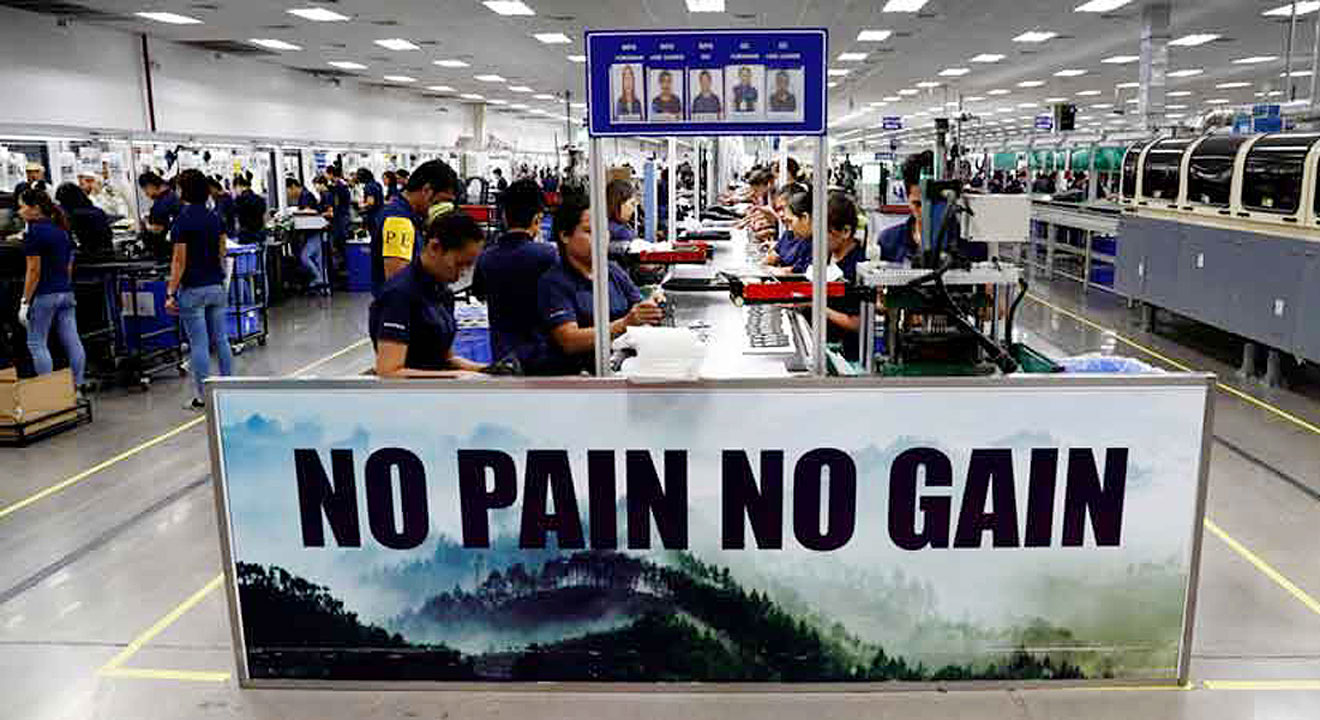Factory output rises for 5th month in a row

MANUFACTURING rose for a fifth straight month in October, reflecting the continued reopening of the Philippine economy, analysts said.
Preliminary results of the Philippine Statistics Authority’s (PSA) Monthly Integrated Survey of Selected Industries (MISSI) on Wednesday showed the volume of production index (VoPI) went up by 5.1% year on year in October, from the revised 4.1% in September. It was the sector’s fifth consecutive month of growth after the 0.5% decline in May.
However, the October growth was slower than the 27% expansion seen in October 2021.
In the 10 months to October, factory output averaged 17.4%.
“This yearly increase is consistent with the reopening theme and the continued return of the economy to pre-pandemic levels,” Ruben Carlo O. Asuncion, chief economist at UnionBank of the Philippines in Manila said in an e-mail interview.
He noted the double-digit growth seen in October 2021 may have been due to base effects.
“The most recent MISSI data point to demand recovery so far outweighing headwinds from higher prices, cost of borrowing, and weaker external demand. This is consistent with the last GDP (gross domestic product) figure, which surprised on the upside,” China Banking Corp. Chief Economist Domini S. Velasquez said in a Viber message.
The economy expanded by 7.6% in the third quarter, bringing the nine-month average to 7.7%.
According to the statistics agency, 14 out of 22 industry divisions contributed to the growth, led by manufacturing of machinery and equipment (except electrical) with 81.8% in October, slower than September’s 88.9% but faster than the 25.7% a year ago.
Manufacturing of beverages expanded by 61.7% in October, a turnaround from the 6.4% contraction in September. Manufacturing of chemical and chemical products grew by 39.5% in October, slowing from 74.6% in the prior month, while fabricated metal products (except machinery and equipment) jumped by 35.7% from 23.7% in September.
“Industries that contributed to faster manufacturing output growth are related to the re-opening of the economy. These are food and beverages, accommodations and transportation, construction-related, and other discretionary products,” Mr. Asuncion said.
Electrical equipment manufacturing declined 56.9% in October, worsening from -55% in September, a reversal from the 42.3% growth in October 2021.
Other industries that contracted in October included manufacturing of basic metals (-23.4%), furniture (-21.6%), and printing and reproduction of recorded media (-17.3%).
IHS Markit’s Philippines Manufacturing Purchasing Managers’ Index (PMI) expanded at a slower pace in October, with a 52.6 reading in October from 52.9 in September. A reading above 50 marks improvement for the manufacturing sector while anything below indicates deterioration.
“IHS Markit alluded to in their [October] report a sharpest contraction of new work volumes from abroad, which my suspicion is due to [COVID-19] restriction challenges in China and the general cautiousness brought about anticipated global economic slowdown in the medium term,” Mr. Asuncion said.
PSA data also showed the capacity utilization rate averaged 72.4% in October, up from 71.5% in September and 67.4% in the same month a year ago. All 22 sectors had an average capacity utilization rate of at least 50%.
Analysts said that the weaker peso would impact the factory sector on its higher input prices with profit return to take time.
The peso depreciated to a record low of P59 versus the US dollar three times in October.
Analysts are looking forward to better manufacturing output in November and December as demand is expected to rise ahead of the holidays.
“However, as inflation remains elevated, business expansion and consumer sentiment will likely weaken. We have observed this in some countries in Asia. Moving forward, the government’s ability to curtail price increases is vital in ensuring continued output expansion,” Ms. Velasquez said.
She also said that the weaker output data will likely show up in 2023, after holiday inventory production ceases.
“In our forecast assumptions for major macroeconomic variables such as GDP, we expect PMI outlook to remain expansive between 51-52 in the last two months of 2022. This will bode well for the manufacturing sector despite the current environment that can curtail economic growth next year,” Mr. Asuncion said. — Bernadette Therese M. Gadon

